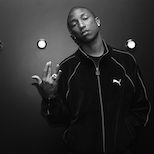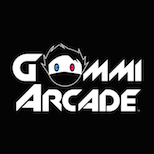Ricardo Rivera of Klip TV Speaks On Innovative 3D Mapping, Sundance Film Festival, & More
02.07.2014
ART & DESIGN
Sundance Film Festival 2014 Bump from Klip Collective on Vimeo.
The Sundance Film Festival isn’t only about movies, it’s also about art. New Frontier at Sundance is a social and creative space that showcases media installations, multimedia performances and more. Ricardo Rivera’s creative production shop Klip Collective made its debut at the festival in 2007 with their unique brand of 3D video projection mapping (think Kanye West’s “New Slaves” projection premiere on steroids). And after last year’s installation “What’s He Building In There,” Klip Collective was tasked with creating the festival’s trailer – which video projection mapped a collage of 30 years of Sundance movies on the historic Egyptian Theater — in conjunction with another installation. Life+Times caught up with Rivera to discuss his distinctive brand of art, the difficulties of being original and his plan to take Klip across the country.
Life+Times: What is the foundation of Klip Collective?
Ricardo Rivera: Well, I was one of three video jockeys during the rave years in the mid-’90s. It was awesome because I got to experiment in these weird warehouses. But there was no way to make a living doing that. So in the early 2000’s I moved to Philadelphia and did some freelancing. Meanwhile, I had this mapping technique in my back pocket but technology wasn’t quite ready for it. In 2003 I stayed up really late in my apartment and I mapped my entire kitchenette. I made this really trippy kitchen installation with water on the ceiling and all kinds of crazy colors. With one projector I broke through with what has become the foundation of my mapping technique. But I didn’t know what to do with it. At the time I was freelancing for photographer Pier Nicola D’Amico and was obsessed with production. I called Nick up and told him he needed to see my kitchen because I don’t know what to make of it. We smoked a fat joint and he said “Dude, we can totally sell this shit!” A month later, Klip Collective was born.
L+T: Considering that it hadn’t really been done before, how difficult was it to get the business going?
RR: Try selling site-specific projection mapping in 2003. Good luck. Nobody knew what we were talking about because there was no point of reference. Our first major gig was with the W Hotels. They gave us five of their lobbies across the country. But still, we weren’t really turning a profit. We were invited to Sundance’s New Frontier in 2007 and that helped get us more commercial work. Meanwhile, the Europeans started putting out more projection mapping on YouTube and now there was a point of reference.
Sundance Film Festival 2014 Bump – Behind the Scenes from Klip Collective on Vimeo.
L+T: Did you feel like they had bit your style?
RR: At first I was upset because they were copying me, but it was great because it helped bring people to us. We won awards for our large-scale ad work. Today I’m on this mission to create a genre out of our line of work rather than it looking like parlor tricks. At the end of the day, I want to push the boundaries with narrative based ideas. We want to become storytellers.
L+T: With the concept being so innovative, did you feel that you were too far ahead of the curve?
RR: We’re so cutting edge that we were cutting ourselves and we were using technology that wasn’t ready. Some of our first installations were running on DVD players and they would break. I consider us the indie art crew out of the collection of projection mapping companies out there.
L+T: What intrigued you about this world of video projection mapping?
RR: Growing up I loved movies like Blade Runner. I don’t know if it was the drugs or the influence but I started exploring and making art with video while I was in college. When I was a video jockey at the raves I discovered projectors. I started pointing that projector at everything and realized I could make my art big and compelling using the surrounding space. It was frustrating at the time because I was poor. Actually, I stole my first video projector. But I stuck with it and now I have a studio and all the gear that I need. I have an amazing set of skills that I have developed over the years and a production staff that is mine. Now I can come to Sundance and create a large scale, 4000-pixel wide projection on the Egyptian Theater.
L+T: Talk about the thought process behind the Egyptian Theater.
RR: They wanted us to project on the Egyptian as a festival trailer but the challenge was that I know how many times people see this trailer and most of the time it is annoying. I had this idea of someone walking along Main Street at night and they come upon this magical moment where the Egyptian comes alive with 30 years of Sundance. I wanted to use the legacy of Sundance and all of the films that have come through the festival to make it like an Easter egg hunt so that every time you watched it you would see a different reference. We used the architecture of the Egyptian – the marquee, movie posters and columns – as our canvas. Some people think that it looks fake but that was all through the lens.
“What’s He Building In There?” Sundance 2013 New Frontier – Teaser from Klip Collective on Vimeo.
L+T: You’re building off of 2013’s “What’s He Building In There?” Can you talk about that a little bit?
RR: After participating in 2007, Sundance wanted me back but they wanted to challenge me by having project on a mundane one-story building, which was where New Frontier would be. I wanted to explore narrative in projection mapping so I spent weeks figuring out what it was going to be. I started playing with this inside/outside idea but it was a boring narrative. Then it hit me because I always wanted to visualize that Tom Waits song “What’s He Building In There” because it’s so creepy and fucked up. That’s the inspiration behind “What’s He Building In There” and what we did with the Egyptian Theater is a sequel to that.
L+T: What’s next?
RRt: I have big shit on the horizon. I’m interested in creating a series with these installations. The first is called Vacant America and is being developed through the Sundance Film Lab. It’s a series of site specific projection mapped installations across the country. We’re going to create an online map of America where people can submit stories of abandoned spaces across the country. The concept for us is to take that story, create a visual and go out to that space and projection map the story in the vacant space. I’m not just talking about factories in Detroit I’m also interested in an abandoned farm in Iowa or a strip mall in New Jersey where someone’s father me their mother at the pizza shop. We’ll then populate the map with these pieces so people can submit and consume. I’m interested in the themes that develop between these pieces. I have my own ideas of what Vacant America is about but I want the people to tell it. It’s a weird documentary approach with projection mapping. For me, this is what new media is supposed to be.
For more information, check out Klip TV





